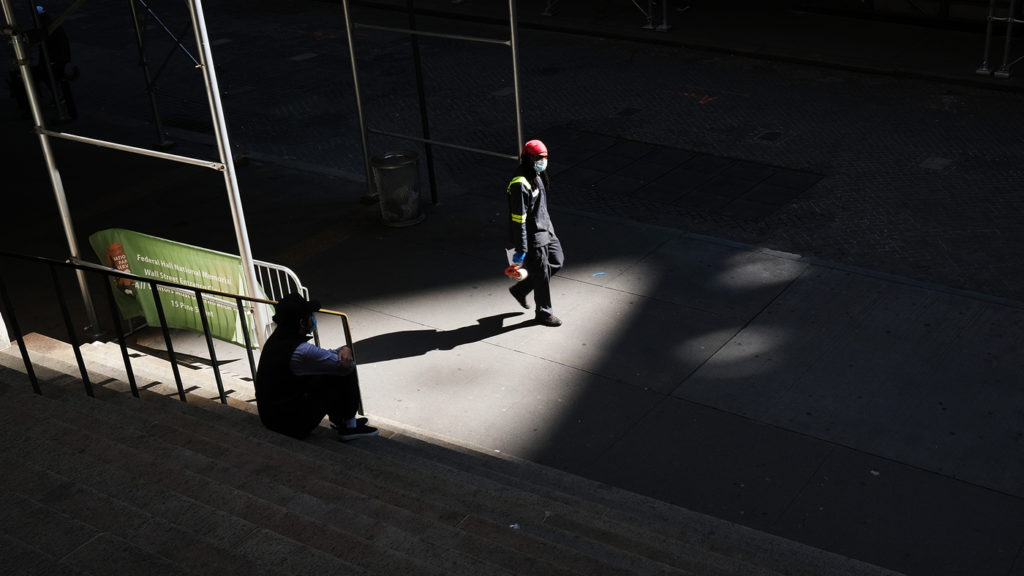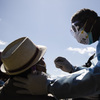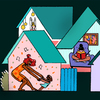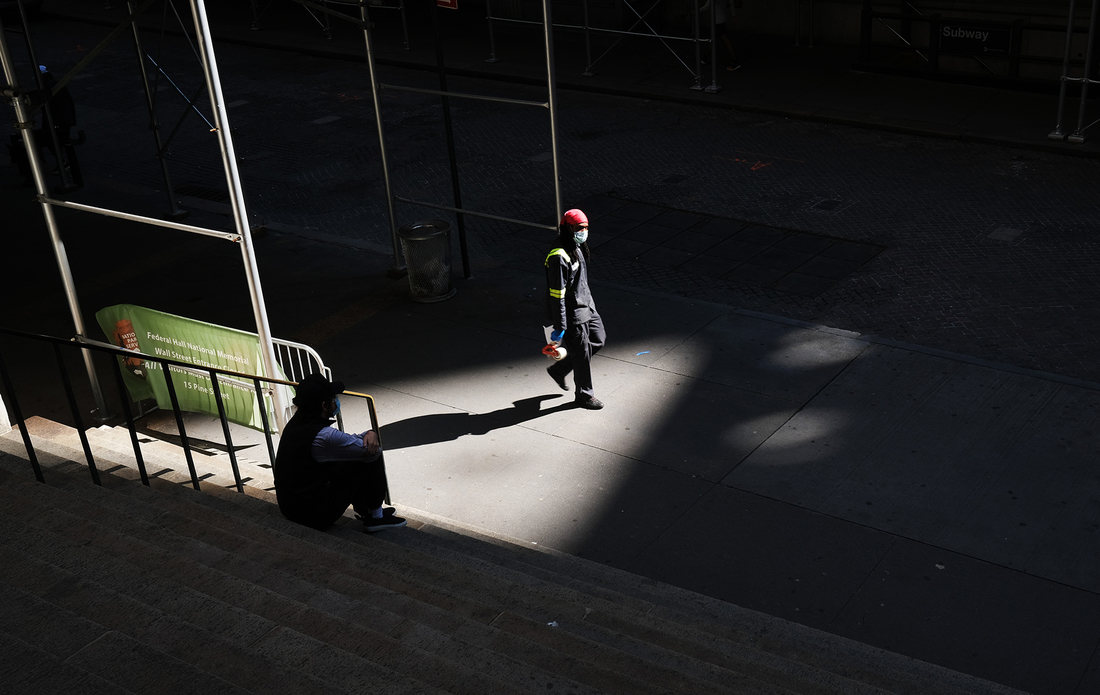
A walk through the streets of New York during the pandemic echoes the loneliness and isolation many Americans are feeling in their battle against a virus that has brought multiple traumas — with no end in sight.
Spencer Platt/Getty Images
hide caption
toggle caption
Spencer Platt/Getty Images
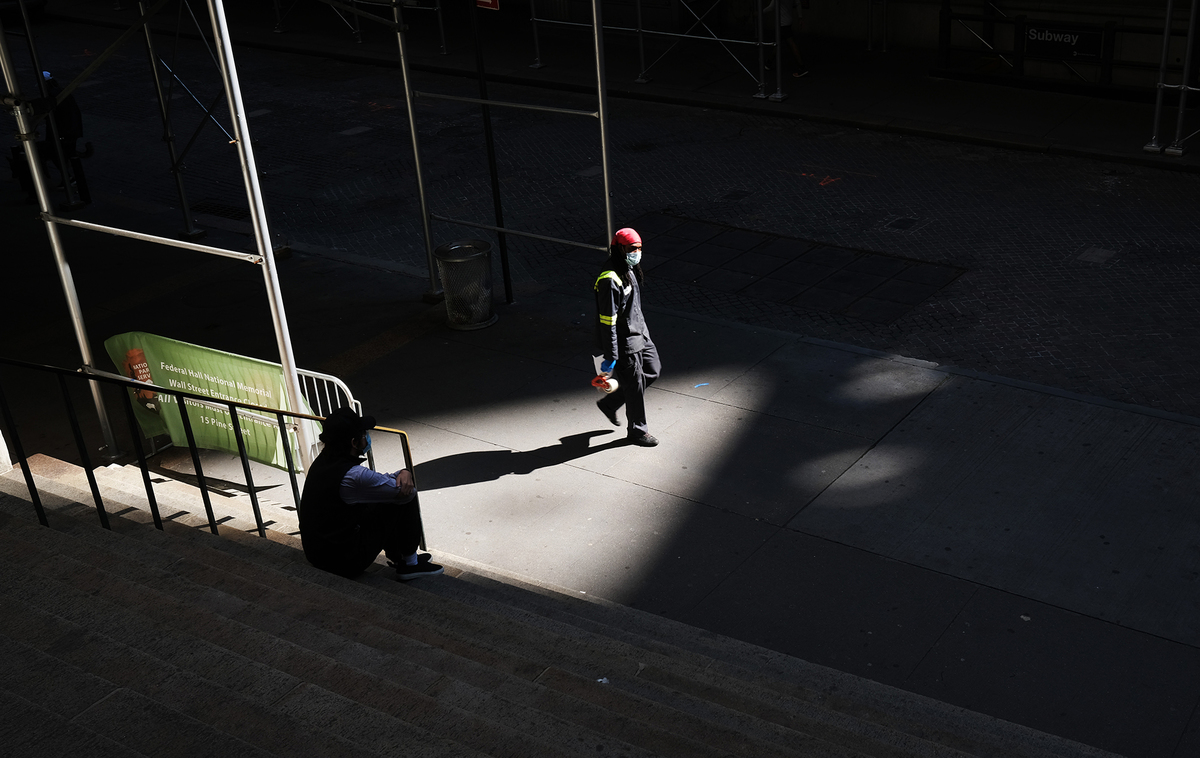
A walk through the streets of New York during the pandemic echoes the loneliness and isolation many Americans are feeling in their battle against a virus that has brought multiple traumas — with no end in sight.
Spencer Platt/Getty Images
Nearly a quarter of people in the United States are experiencing symptoms of depression, according to a study published Wednesday. That’s nearly three times the number before the COVID-19 pandemic began.
And those with a lower income, smaller savings and people severely affected by the pandemic — either through a job loss, for example, or by the death of a loved one — are more likely to be bearing the burden of these symptoms.
When a population experiences something traumatic, such as a pandemic or a natural disaster, researchers usually expect a rise in mental illnesses in the weeks and months following the event.
But the mental health toll of the coronavirus pandemic seems to be far greater than previous mass traumas, says Catherine Ettman, a doctoral student in public health at Brown University and an author of the study, which was published in the current issue of the American Medical Association journal JAMA Network Open.
“We were surprised at the high levels of depression,” Ettman says. “These rates were higher than what we’ve seen in the general population after other large-scale traumas like September 11, Hurricane Katrina and the Hong Kong unrest.”
“I think it reflects both the widespread nature of this particular trauma as well as the fact that there are multiple traumas,” says Dr. Sandro Galea, an epidemiologist and dean of the School of Public Health at Boston University. Galea coauthored the new study with Ettman.
Traumas linked to pandemic have included ongoing anxiety and fear of catching the disease, and grief over the illness or loss of loved ones as well as the economic fallout.
“It’s not one of these ‘we get hit and it’s over’ kind of things. That is, psychologically speaking, the easiest thing to recover from,” says George Everly, a psychologist at Johns Hopkins University, who wasn’t involved in the research. Once a discrete disaster is over, he says, people often are able to start rebuilding their lives and regain a sense of normalcy.
But with COVID-19 cases still climbing across the U.S., and the course of the pandemic still uncertain, Americans are constantly stressed, not knowing what lies ahead, he says. And that makes it more difficult for people to recover emotionally.
“The hardest thing to recover from is waiting for that … second shoe to drop,” Everly says. “You never know when it’s going to drop.”
Galea points to a couple of recent studies that have also documented the emotional toll of the pandemic. A study published in JAMA in June found elevated levels of psychological distress and loneliness among U.S. adults in the earliest months of the pandemic. And in another study from the Centers for Disease Control and Prevention, published in mid-August, a significant number of Americans reported experiencing mental health symptoms during the pandemic — including depression, anxiety, substance abuse and thoughts of suicide.
“It looks to me like the science is converging, that this is exactly what’s happening in the population,” Galea says.
What’s more, some of the public health measures required to keep us safe from the virus have taken away our most effective ways of buffering stress, Everly says: social connection within a community.
“In virtually every wide-scale disaster I studied, there is a sense of human resilience — people come together,” he says. “Interpersonal support is the single best predictor of human resilience. This disaster undermines our single most important protective factor.”
Like the other effects of the pandemic — health and economic — the mental health effects are being disproportionately borne by people who started out with fewer social supports and financial resources, the study finds.
“People with lower income were twice as likely to have depression,” Ettman says, “and among people within the same income group, [those] who had less in savings were 1.5 times more likely to have depression.”
Those who had lost a job, or experienced the death of a loved one were at a significantly higher risk of having symptoms of depression.
That disproportionate effect, Galea says, “compounds existing problems and runs the risk of creating further divides between health haves and have-nots.”
That’s because depression and other mental illnesses put people at risk of a host of physical health problems, which in turn affect their ability to work and maintain their social connections. “Poorer mental health is at the heart of poor health,” Galea says. “More broadly, it’s at the heart of poor economic function, poor social function.”
He says he fears that the COVID-19 pandemic has paved the way for “another pandemic of depression.”
“The second pandemic, I would suggest, is not only coming but is here,” Everly says. “I believe that it will intensify because … there will be a ripple effect. Once we get a treatment and a vaccine, it is naive to believe that the mental health consequences will disappear overnight.”
